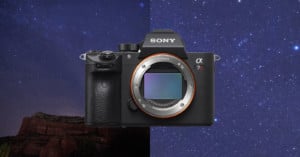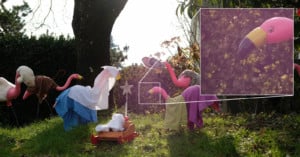
Sony Pulls FX30/FX3 Firmware Amid Reports it Traps Them in a Boot Loop
Sony has suspended downloads of FX30 and FX3 firmware amid reports that in some cases it will cause the cameras to get trapped in a boot loop.

Sony has suspended downloads of FX30 and FX3 firmware amid reports that in some cases it will cause the cameras to get trapped in a boot loop.

A mechanical issue that took the James Webb Space Telescope's Mid-Infrared Instrument (MIRI) offline on August 24 has been resolved and the camera has resumed full operation.

NASA has paused the use of one of the modes on the James Webb Space Telescope's (JWST) Mid-Infrared Instrument (MIRI) due to what it describes as "increased friction" that occurs during its setup phase ahead of new observations.

Canon has pulled the latest R3 firmware update that was announced last week. The company has not disclosed why the update has been removed.

Fujifilm has issued an "important notice" to photographers using Fujifilm cameras and macOS computers, warning that a firmware incompatibility found in several popular that may cause issues with accessing files and a risk of file loss in macOS. The company says a firmware fix is in development.

Lightroom version 6.0, officially Adobe Photoshop Lightroom CC 2015, was the last major release of Lightroom that was available with a perpetual license (i.e. a one-time purchase). Unfortunately, some users who don't wish to make the jump to paying a subscription through the Creative Cloud are finding that "perpetual" isn't as all-encompassing as they thought.

Hundreds of astronomers, satellite operators, and dark-sky advocates recently joined forces to call out a problem that impacts all three groups: the growing number of SpaceX 'Starlink' satellites in orbit, and how these 'constellations' could actively hurt scientific progress and have a 'fatal' impact on some forms of astrophotography.

The team at Lensrentals just published Part 2 of their fascinating flange distance test, where they compared various Sony, Canon, and Micro Four Thirds stills cameras. What they found is particularly relevant to Sony shooters, or anyone with a camera that has IBIS.

Tamron's 70-180mm f/2.8 Di III VXD lens for Sony E-mount mirrorless cameras has been a huge hit since it was announced. But buyer beware: the company has released a product advisory after discovering that some lenses suffer from a calibration issue, resulting in poor performance.

It might sound like an April Fools joke, but it's not. There is a photo making the rounds on social media that can literally send your Android phone into an infinite crash loop if you set it as the wallpaper. The issue, apparently, is the photo's unusual color space.

If you're the proud owner of a Samsung Galaxy S20 Ultra, you may want to start being extra careful with the smartphone -- some users are reporting that the glass covering the large 108MP module is unexpectedly shattering on them for no apparent reason.

Drone photographers have one more weekend to submit their comments to the FAA regarding the agency's highly controversial Remote ID proposal. If you're still not sure what it is, or how to help change it before it's too late, this guide from Pilot Institute will explain everything you need to know.

Users of Fujifilm's brand new and much-anticipated X-Pro3 rangefinder have started reporting a troubling issue with their viewfinders. A number of users have taken to both DPReview and the FujiX Forum over the past few weeks to report that their cameras' EVFs have "all of a sudden" started showing a wildly overexposed image and preview, making them impossible to use.

Canon has officially confirmed that the new RF 70-200mm f/2.8L IS USM lens does, indeed, have a front-focusing issue at minimum focus distance, and revealed that a firmware fix will be released as soon as possible.

The best smartphone for photography—at least according to many reviewers—is suffering from a significant camera defect. Over the past few months, a large number of Google Pixel 3 owners have taken to the forums to report and document a "Camera Shaking" issue that is plaguing their smartphones.

Once upon a time, the biggest problem with camera phones was the camera itself. One of the world's first camera phones, the J-SH04, was released in 2000. Boy have we come a long way, right? It could shoot tiny 0.11-megapixels images. It went up from there.

Is your Sony camera not tethering to Capture One Pro or any other software on your Mac or Windows computer? I had this issue for quite some time and thought there must be some issue with my system, or camera, or wire -- nope. I decided to write a message to Capture One and get a fix but no one could help me.

As friends and families get ready to get together for the holiday season, Google Pixel 3 owners are experiencing a bug that could get in the way of capturing special memories. People are reporting camera error messages and their phones failing to launch the highly-touted camera.

If you own a Google Pixel 3 or 3 XL and have noticed any photos not getting saved to your gallery, it's not just you. Google has confirmed that its latest smartphones have a camera bug, and a fix is on the way.

The Instagram generation has been bad news for beauty spots around the world as people flock to the same picturesque locations and shoot similar-looking photos to boost their social media status, often leaving a trail of destruction in their wake. Now you can add sunflower farms to the list of places affected.

A week ago, Apple announced upgrades to its MacBook Pro line that brings the processing power of the 15-inch version up to a 6-core 8th generation Intel CPU. The new CPU is supposed to bring a 70% performance increase, but reviews are finding that the laptop runs too hot, throttling the real-world CPU performance.

Samsung's smartphones may not be randomly bursting into flames now, but a strange and creepy new problem has appeared: some users are having photos randomly and quietly sent to other people.

My name is Steffen Jahn, and I'm a seasoned car photographer based in Germany. With over 20 years in the business and having worked with all the famous manufacturers like Porsche, Lamborghini, Ferrari, Mercedes and Audi, I have a basic understanding what professional car photography is all about.

Sony's latest mirrorless cameras have incredible specs and glowing reviews, but astrophotographers have been complaining about a "star eater" issue in which stars are mistaken for noise and removed from long exposure photos. There's some good news, though: it looks like the new Sony a7R III doesn't have the "star eater" problem.

If you use Lightroom 6 and don't have any plans to switch to Adobe's subscription software, here's a warning: don't run the Lightroom updater through Adobe's download manager with default settings. It will delete your Lightroom 6 and install Lightroom CC instead.

If you own a new Leica TL2 mirrorless camera and Leica's Visoflex electronic viewfinder attachment, stop using the viewfinder immediately. Leica has found that the Visoflex can cause a failure with the TL2 that renders it completely unusable. In other words, it can brick your camera.

Unfortunate news from the Nikon camp this week: Nikon has issued yet another recall notice for the D750 DSLR, informing owners that the shutter problem first reported in 2014 may still be present in cameras manufactured recently.

Sony recently released firmware v.4.0 for its a7S II and a7R II mirrorless cameras. The announcement that this firmware version “Improves image quality when Long Exposure NR setting is off” raised hopes for many photographers that Sony had at last addressed the issues caused by their automatic smoothing of all exposures of 4 seconds or longer, sometimes referred to as the "Star Eater" effect because of the way that it removes stars in astrophotography images.

Sony makes excellent cameras. In the last few years, they launched a completely new full frame camera system that has pushed the bounds of digital photography. I switched entirely to Sony gear after first seeing the tremendous low-light capability of their a7S and have enjoyed many outings shooting astrophotography on many different Sony camera bodies since.

When FujiFilm’s X-Trans III sensor was introduced in the X-Pro2, many users began noticing a strange new artifact in their backlit photographs. Upon further experimentation, it became apparent that the same artifact could also be found in images from cameras using the older X-Trans II sensor.